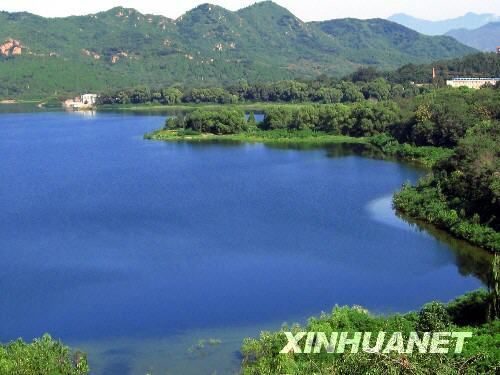About a quarter of China's 4,555 centralized drinking water sources - rivers, lakes, reservoirs and underground reserves - are contaminated and pose a threat to people's health, Environmental Protection Minister Zhou Shengxian said yesterday.
He made the comments while reporting on the country's progress on water pollution at a plenary session of the National People's Congress Standing Committee in Beijing.
 |
|
The Huairou Reservoir in suburb Beijing provides the capital city with most of its drinking water. The municipal government has adopted various measures to curb environmental pollution to guarantee water safety for its citizens. [Xinhua photo taken on August 3, 2008] |
Much of the contamination is due to high levels of elements such as nitrogen and phosphorous, a senior official with the environment ministry said.
"These pollutants can be purified at waterworks, so tap water is generally safe," Li Xinmin, deputy director of the ministry's environmental prevention department told China Daily.
But the contamination is still a threat to people's health, as such toxic elements are not examined at all drinking water sources, Zhou said.
Normally, 28 indexes, such as chemical oxygen demand, are monitored on a daily basis to determine water quality.
A further 81 measurements for toxic elements, such as heavy metals and persistent organic pollutants, are required to be examined once a month to prevent water pollution accidents, Li said.
Only about a quarter of the country's 661 cities are capable of carrying out examinations for these complementary indexes, which means accidents still happen, he said.
For instance, the arsenic pollution in Yangzonghai Lake in Yunnan province in June affected water supplies to more than 26,000 people.
China reported 178 water pollution cases last year, accounting for more than 38 percent of all environmental accidents, Zhou said.
The country has built more sewage treatment facilities to clean its rivers and lakes.
The 11th Five-Year Plan (2006-10) states that by 2010, at least 70 percent of the nation's sewage from cities should be effectively treated.
The central government's stimulus package also includes money for the construction of sewage treatment plants in county-level administrative regions.
In the first 10 months of the year, China treated 19 billion tons of urban household wastewater, up 21 percent year-on-year. Since 2006, it has spent 24 billion yuan (US$3.5 billion) to provide safe drinking water to 109 million people in rural areas.
(China Daily December 25, 2008)